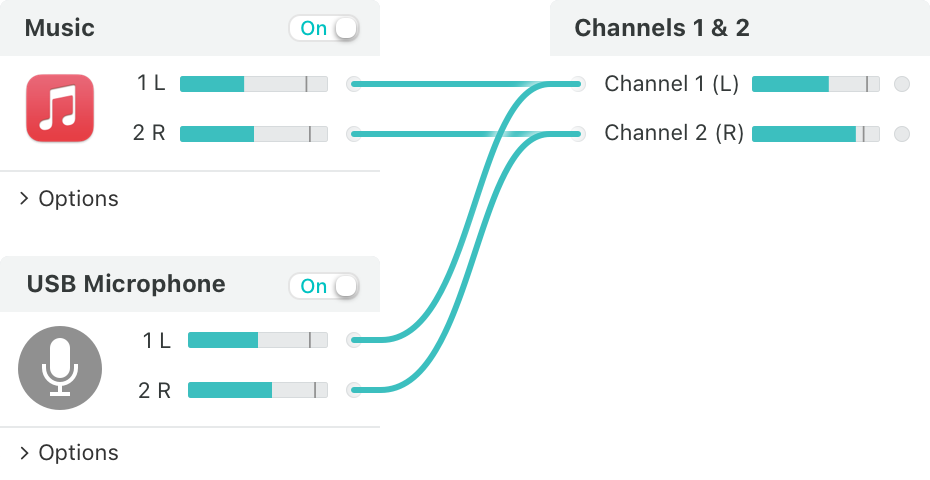I know that you can make a virtual network interface in Windows (see ), and in Linux it is also pretty easy with ip-aliases, but does something similar exist for Mac OS X? I've been looking for loopback adapters, virtual interfaces and couldn't find a good solution. You can create a new interface in the networking panel, based on an existing interface, but it will not act as a real fully functional interface (if the original interface is inactive, then the derived one is also inactive). This scenario is needed when working in a completely disconnected situation. Even then, it makes sense to have networking capabilities when running servers in a VMWare installation. Those virtual machines can be reached by their IP address, but not by their DNS name, even if I run a DNS server in one of those virtual machines.

By configuring an interface to use the virtual DNS server, I thought I could test some DNS scenario's. Unfortunately, no interface is resolving DNS names if none of them are inactive. In regards to @bmasterswizzle's - more specifically - to @DanRamos' question about how to force the new interface's link-state to 'up'.
4.1 Running R under macOS; 4.2 Uninstalling under macOS; 4.3 Multiple versions. 5 Running R; 6. This manual is for R, version 3.5.1 Patched (2018-12-02). Sep 30, 2015 Download OS X El Capitan. All Mac users who wish to download OS X El Capitan must do so from the Mac App Store, where it is available as a free download from Apple: Get the final version of OS X El Capitan from the App store here; The El Capitan installer is about 6GB in size. Download OS X EL Capitan 25,701 On September 29, 2015, Apple announced that OS X® El Capitan, the latest major release of the world’s most advanced desktop operating system, will be available on Wednesday, September 30 as a free update for Mac® users.
I use this script, of whose origin I cannot recall, but which works fabulously (in coordination with ). #!/bin/zsh [[ '$UID' -ne '0' ]] && echo 'You must be root. && exit 1 echo 'starting' exec 4/dev/tap0 ifconfig tap0 10.10.10.1 10.10.10.255 ifconfig tap0 up ping -c1 10.10.10.1 echo 'ending' export PS1='tap interface>' dd of=/dev/null. A few others seemed to hint at this, but the following demonstrates using ifconfig to create a vlan and test DNS on the virtual interface (using ) on OS X 10.9.5: $ sw_vers -productVersion 10.9.5 $ sudo ifconfig vlan169 create && echo vlan169 created vlan169 created $ sudo ifconfig vlan169 inet 169.254.169.254 netmask 255.255.255.255 && echo vlan169 configured vlan169 configured $ sudo./minidns.py 169.254.169.254 & [1] 35125 $ miniDNS:: * 60 IN A 169.254.169.254 $ dig @169.254.169.254 +short test.host Request: test.host.
-> 169.254.169.254 Request: test.host. -> 169.254.169.254 169.254.169.254 $ sudo kill 35125 $ [1]+ Exit 143 sudo./minidns.py 169.254.169.254 $ sudo ifconfig vlan169 destroy && echo vlan169 destroyed vlan169 destroyed.
What do you mean by 'but it will not act as a real fully functional interface (if the original interface is inactive, then the derived one is also inactive'? I can make a new interface, base it on an already existing one, then disable the existing one and the new one still works. Making a second interface does however not create a real interface (when you check with ifconfig), it will just assign a second IP to the already existing one (however, this one can be DHCP while the first one is hard coded for example). So did I understand you right, that you want to create an interface, not bound to any real interface? How would this interface then be used?
If you disconnect all WLAN and pull all network cables, where would this interface send traffic to, if you send traffic to it? Maybe your question is a bit unclear, it might help a lot if rephrase it, so it's clear what you are actually trying to do with this 'virtual interface' once you have it. As you mentioned 'alias IP' in your question, this would mean an alias interface. But an alias interface is always bound to a real interface. The difference is in Linux such an interface really IS an interface (e.g. An alias interface for eth0 could be eth1), while on Mac, no real interface is created, instead a virtual interface is created, that can configured and used independently, but it is still the same interface physically and thus no new named interface is generated (you just have two interfaces, that are both in fact en0, but both can be enabled/disabled and configured independently). Go to Network Preferences.

 0 kommentar(er)
0 kommentar(er)
